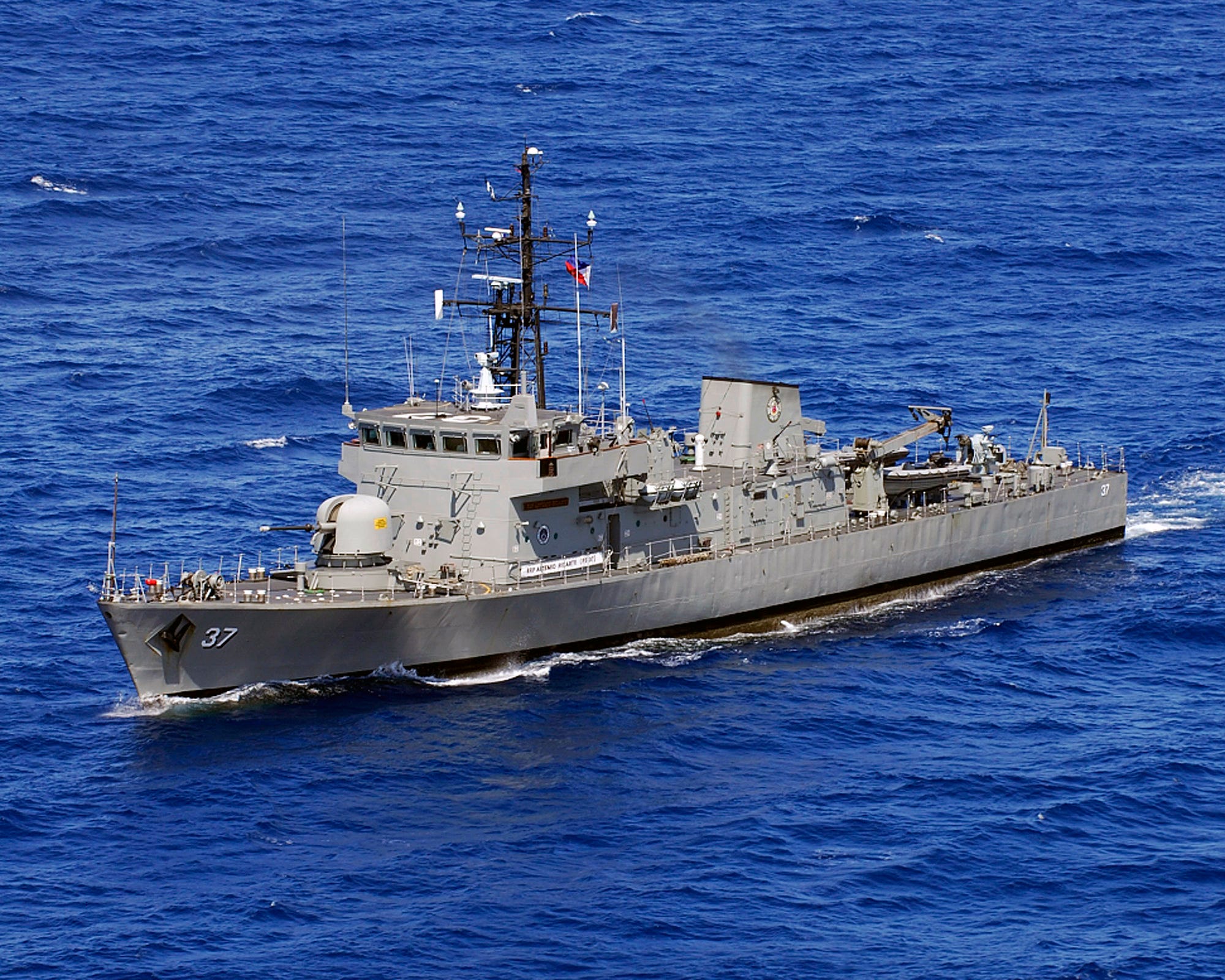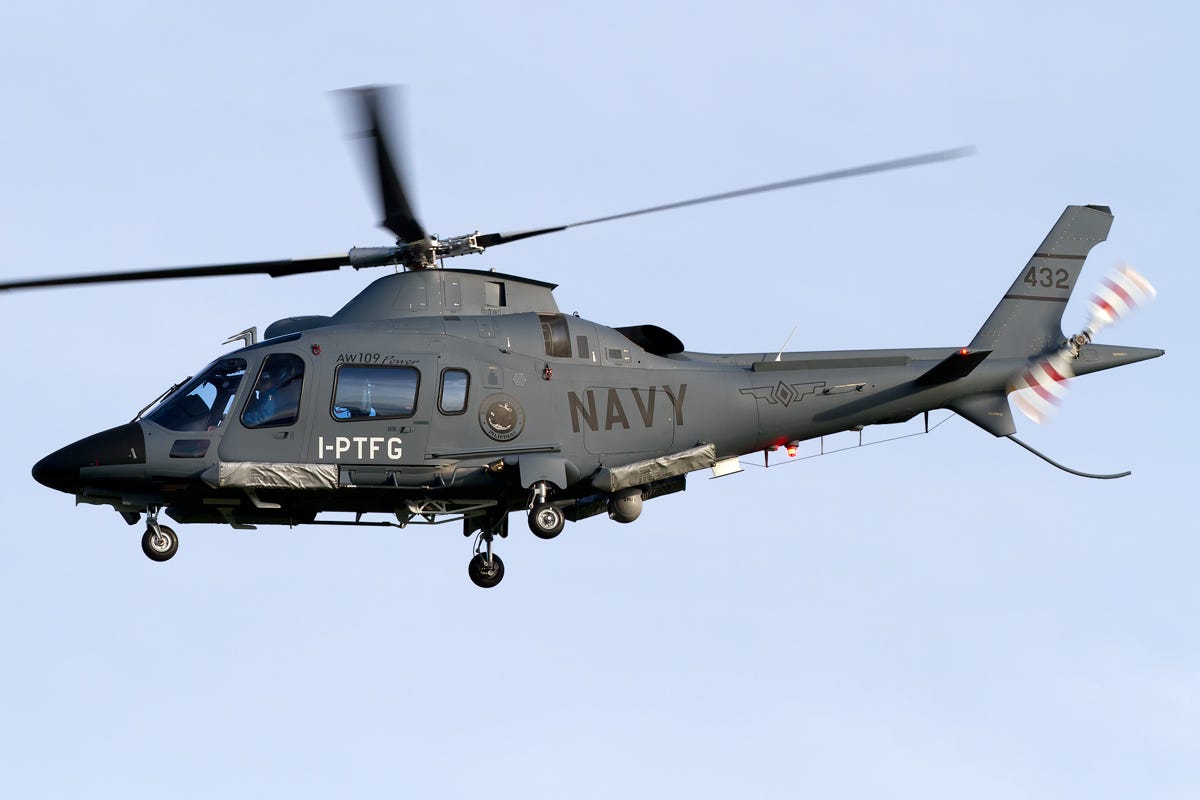Manila has to make up for decades of neglect
In December 2014, the Philippine Navy announced plans for a major overhaul of its beleaguered force. It’s about time. The archipelago’s sailing force is made up of half-century-old antiques—and is falling apart.
Under the new proposal, Manila expects to spend $2 billion over the next 15 years on new warships, submarines, helicopters and more. The primary focus of these purchases is to help bolster the country’s claims in the South China Sea against Chinese intrusions.
“The events in the West Philippine Sea actually gave some urgency on the acquisition,” Philippine Navy Rear Adm. Caesar Taccad told reporters at the event, according to Reuters.
And Beijing’s increasingly aggressive attitude in the region came as a “surprise” to Manila, says Eric Wertheim, a naval expert and the author of the U.S. Naval Institute’s authoritative Combat Fleets of the World.
Three years ago, Manila and Beijing squared off in the disputed Scarborough Shoal over illegal fishing.
In a relatively humiliating turn of events, unarmed Chinese “marine surveillance” ships prevented the BRP Gregorio Del Pilar from entering the area to arrest the offending fishermen.
At the time, the 3,000-ton, former United States Coast Guard cutter was the largest ship in the Philippine arsenal. Manila currently has two of these Hamilton-class ships, which “represent the bulk of sea-based combat power for the Philippine Navy,” according to a statement from the American embassy.
Unfortunately, the Philippines’ naval forces are still “hopeless outclassed” by the People’s Liberation Army Navy even with these ships, Wertheim says. Manila’s museum navy “is in dire need of modernization.”

Above—The Philippine Navy’s corvette BRP Emilio Jacinto. At top—the BRP Gregorio Del Pilar. Navy photos
The country will have to overcome “decades of neglect” if it wants to build a force that might actually challenge the PLAN, Wertheim adds. After World War II, the Philippines relied heavily on the U.S. to provide security against larger countries in the neighborhood.
But Manila also has a complicated colonial past with Washington. After the Cold War ended, Philippine authorities decided it was time for American forces to finally leave the country.
“There’s lots of history there,” Wertheim says of this complex relationship between the two countries.
In the decades that followed, the southeast Asian nation’s forces focused their energies—and their budgets—on dealing with insurgents and terrorists.
By 2000, many of the Philippines’ largest ships were practically museum pieces. The flagship BRP Rajah Humabon—a 1,500-ton destroyer escort—was a World War II veteran and more than 50 years old at that point.
Seven years earlier, the Philippine Navy even pulled Rajah Humabon from service because the ship was in such poor condition. The Cavite Dockyard eventually restored the ship to active duty—out of necessity.
Manila’s naval forces also included more than a dozen other World War II-era mine-sweepers and landing ships. Navy personnel stripped the mine hunters of any specialized gear and used them purely to safeguard the country’s sea borders.
With the exception of some domestically produced patrol craft, the newer ships were all hand-me-downs from the United States, United Kingdom and South Korea.
After the 9/11 attacks, Washington was more than happy to help Philippine troops and sailors in their counterterrorism efforts. The Pentagon approved a program to “improve the tactical effectiveness and operational reach of the Philippines’ Navy” in 2011.
But the only watercraft included in the aid package were tiny Zodiac boats, according to documents War Is Boring received through the Freedom of Information Act.
Commandos used these inflatable rubber craft to sneak into rebel strongholds and patrol close to shorelines. While ideal for those missions, the boats—each with a single outboard motor—are useless for enforcing maritime boundaries.
Today, the Philippine Navy lacks the ships to adequately police most of its territory, and has no long-range patrol aircraft like the American P-3 Orion to help fill in any gaps.
Manila even deliberately grounded the BRP Sierra Madre in the Second Thomas Shoal—another contested area of the South China Sea—to try and make up for these shortcomings. In 1945, the former U.S. Navy landing ship fought the Japanese at Okinawa, but now the vessel serves as a rusting base for Philippine marines.
So the Philippines’ “most pressing requirement … is to monitor what’s going on,” Wertheim says. The country encompasses more than 7,000 individual islands across some 300,000 square miles of the Pacific.
Manila has bought shore-based radars to keep watch over the seas. And Gregorio Del Pilar and her sister ship Ramon Alcaraz—along with their new AW-109 light helicopters—are important tools to deter any Chinese ships that might turn up.

Philippine navy AW-109 helicopter. Fabrizio Capenti/Wikimedia photo
But these vessels were also first launched half a century ago, and lack many modern weapons and sensors. The Hamilton-class cutters have a single 76-millimeter main gun, and several automatic cannons and machine guns.
“We’re not talking modern ships” and Manila still has an “all gun navy,” Wertheim points out.
A lack of long-range weapons, including missiles, limits the ability of these vessels to compete against more modern Chinese frigates and corvettes.
In January, Philippine Navy officials declared both ships would get some type of deadly anti-ship missile in the future, according to the Manila-based social news site Rappler. But the spokesman offered no timeline for when the refits would begin.
Despite the elaborate plans, Manila’s sailing branch could be hedging its bets against the country’s political and economic instability. The Philippines is about to enter a heated election season before it chooses a new president next year.
Philippine authorities have been trying to buy an assortment of new ships for years. Three years ago, plans to buy Italian frigates and corvettes fell through.
Naval upgrades have been a problem for the Philippine Navy in the past, too. Between 2005 and 2007, Manila tried and failed three separate times to find a company who could refurbish the Emilio Jacinto-class ships, according to an official review.
These corvettes were among Manila’s newest ships. The British Royal Navy first bought the ships for its Hong Kong Squadron in the early 1980s.
Philippine authorities also hired the Propmech Corporation to improve the speed and range of two former South Korean gunboats. By 2007, the program was dragging on because Propmech simply couldn’t finish the work.
And Manila might also just be overestimating the kind of ships its current forces can operate. The Philippine Navy has even established a naming convention for three potential aircraft carriers, according to a study guide for officer cadets at De La Salle University.
In the end, the ships might not arrive soon enough to deter Beijing’s expansion in the South China Sea—or at all. But should Manila complete this modernization project, the country’s Navy will likely see the most significant influx of new ships since the 1990s.
If the vessels do make it into service, it’ll help bring the force into the 21st century—or at least “the latter part of the 20th century,” Wertheim says.

No comments:
Post a Comment
Note: Only a member of this blog may post a comment.